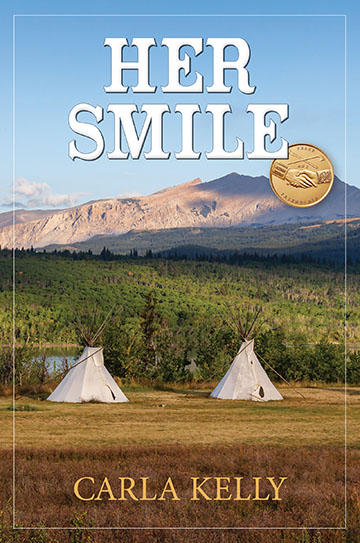It’s a writerly joke that we novelists usually have an unpublished manuscript stuck in a drawer. You know, something that we finished, and there it stayed, for whatever reason.
I had two such manuscripts. The first one was The Necklace, which I massively rewrote and which came out in February, 2021. My editor, Jennifer McCord, tells me she hears from Ingram, the major book distributor in the US, that it’s still chugging merrily along. Gracias.
The other one was called Bright Sky. I wrote it many years ago for Western Writers of America’s annual First Novel Contest. It ended up as a finalist, which I found gratifying, but I stuck it in that proverbial drawer. I was about to embark on my Regency writing career, which started with Signet, now part of Penguin Putnam. I didn’t have time for an irreverent, hilarious, monumentally sad, amazingly courageous novel about Indians and a real greenhorn who lands in their midst because of her %&^-ing horse.
As a historian as well as a novelist, I enjoy the challenge of inserting my fictitious people alongside the real ones, if it can be done with enough finesse to make it plausible. I take to heart the words of Richard Woodman, a bona fide Navy guy from England (he worked for Trinity House), who has written wonderful works of non-fiction about ships in general, and the Napoleonic Wars in particular. He’s also the author of a fine fictional series featuring Nathaniel Drinkwater, during that monumental struggle with Napoleon. I prefer his Royal Navy yarns to Forester’s or O’Brian’s, because Woodman actually lived the life at sea. It shows.
Woodman said this, comparing his Drinkwater series to Forester’s Hornblower series: “This difference sprang from my desire to truly reflect the reality of the sea-life of the period, and not some romanticized version of it, but also a strong urge to insert my imaginary naval protagonist into the very fabric of recorded history.”
If done right, the reader more easily makes the leap to considering the fictional characters real. It’s a skill, and I’ve spent a lot of years learning how to do that.
In the summer of 2020, my daughter Mary Ruth and her family came to see us, which meant a visit to Yellowstone National Park. (We live about 90 miles from YNP.) When you’re in the park, you’ll see a roadside exhibit dedicated to the Nez Perce, who came through Yellowstone in 1877, as they were trying to escape Gen. Howard’s Department of the Columbia troops from farther west. In their flight, the Nez Perce startled two groups of tourists. Is that fodder for a novelist, or what?
On the way home, Mary Ruth reminded me of Bright Sky, which she read when she was a teen. “Do you still have that, Mom?” she asked. I said it was somewhere. She said I really should get it out.
After they left, I found that raggedy old manuscript. I wrote it on a typewriter originally, and took it in to work on Saturdays mainly, where I transcribed it onto my Jurassic-era computer. I stored it on one of those long-gone 6” square floppy disks. The disk truly was long gone, but at least I found the manuscript. I am so grateful.
Last year, I read it for the first time in more than thirty years and said, “Day-um, this is a good book!” And it is. I had to retype it so I could get it on my Mac. As I retyped it, I massively rewrote it. I did that because in the past thirty years, I’ve learned a whole lot more about writing, about the U.S. Army, and about First Nation peoples.
I sent it to Jennifer, and I had a contract in a few days for Her Smile, the rewritten novel with a far-more-appropriate title (you’ll have to read the book to understand). Jennifer has wonderful connections in the publishing world. When the manuscript turned into a book, she sent an electronic copy to John Charles, a sterling reviewer for Booklist.
Mr. Charles wrote a wonderful, thoughtful review. I’d call it a Million Dollar Review, if anything I ever wrote actually made money. (Readers, most novelists don’t make a ton of money.) He saw the book for what it is. His assessment makes me understand why he’s the gold standard for romance writers.
Her Smile will be out on September 14. I dedicated Her Smile to Mary Ruth, who read it as a teen, and reminded me about it. Thanks, Mary Ruth. I owe ya big time.
Readers, Her Smile won’t disappoint you. Incidentally, I named my heroine Elizabeth Ann, after another daughter.
I have useful children, but that’s another blog.
